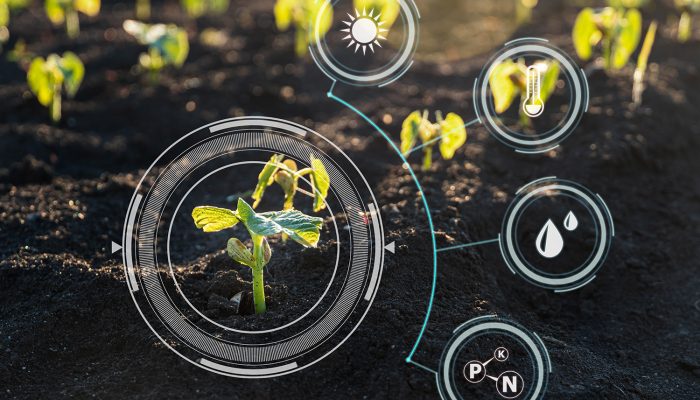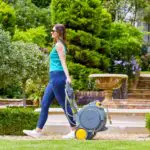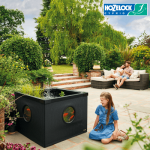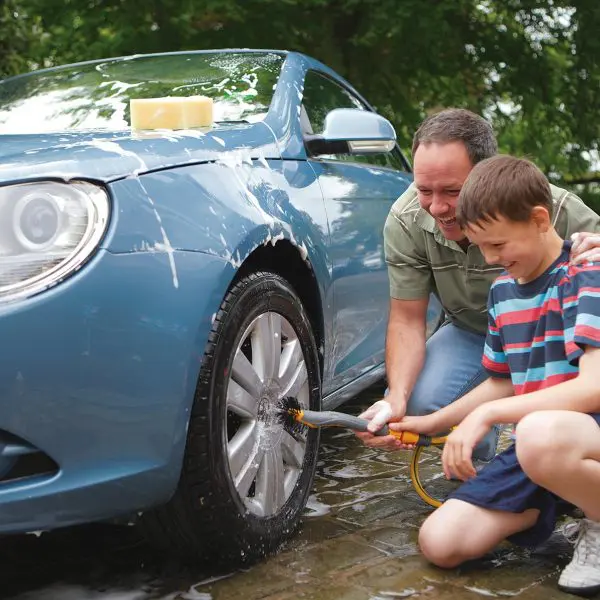Removing Weeds

Effective preparation will help you to produce a great-looking lawn. It’s important to begin preparing a number of weeks before you plant to start sowing. Start your preparation by removing any weeds by digging them out, using a weedkiller or a chemical-free weeder. This will ensure that your new lawn will be weed-free.
Improving the soil

If the soil is relatively hard, you will need to dig or rotavate at a level of 20 – 25cm. For light soils, add plenty of well-rotted manure or compost by using our new EasyMix 2-in-1 Composter. For poor-quality soil, simply add topsoil. After any of these changes, leave the ground for between 2 to 6 weeks. You may need to re-visit the soil to remove any further weeds. You can then firm the soil by using small, shuffling steps, or hire a roller for larger areas. You can then gently rake the surface to make it level and smooth, removing any large stones. Finally, rake in a general-purpose fertiliser, at a rate of 70g (2oz) per sq m (sq yd).
Choosing the right seeds

A general-purpose lawn seed is hard-wearing and allows for plenty of wear and tear. This lawn will grow fast and will need regular mowing. Use a blend of perennial ryegrass, red fescues, tall fescue and browntop. A shady lawn is not as hard-wearing and can be used under trees, by fences and around hedges. Shady lawn seed is ideal for gardens that receive little sun. This mix includes hard fescue, strong and slender creeping red fescue and browntop. Finally, a luxury or fine lawn creates a dense, soft lawn. This mix contains a blend of Chewing’s fescue, strong and slender creeping red fescue and browntop. Fine lawns are slow growing and can be mown much lower.
Weight & Divide

Once you have selected your seeds, you can weigh out the correct quantity of seeds for your lawn. In general, you will need 25-30g of lawn seed per square metre. For over-seeding or renovating, 15-25g of lawn seed is adequate. The weight per square metre is usually indicated on the packaging. Once you have weighed your seeds, divide them into two equal batches.
Start Sowing

Sow half the seeds across the soil, walking up and down in rows. Scatter them by hand or using a hand-held or wheeled seed scatterer. Repeat this process with the second batch. You can then either give the soil a light rake to cover the seeds with soil or gently walk over the soil. Give the seeds a gentle watering. Use an automatic watering controller so you don’t forget! Use a horticultural fleece across the soil to protect the seeds from wildlife. This will also improve germination dramatically.
Seedlings

Seedlings will appear within a week or two after sowing. Keep watering the seedlings daily for the first 6 weeks. It’s important not to allow the soil to dry out. When seedlings are 5–7cm (2–3in) tall, lightly firm the soil with a garden roller or simply walk on any raised areas.
Mowing the Lawn

Once your lawn is 5–7cm (2–3in) tall, it’s ready for the first mow. Trim down the lawn by only 1/3 of its height, and ensure that the blades are sharp for optimum cutting. For spring-sown grass, cut it every week until you are happy that the grass is strong and robust. Be careful not to cut too short, especially as warmer temperatures are approaching. For autumn-sown grass, you may need need to mow again until the spring. Keep an eye our for any weeds and make sure to remove these straight away.
Lawn Care

Use the lawn as little as possible for around 6 – 8 months. You may notice some dips in the ground, simply add a thin layer of sieved compost to this area. Consider feeding your new lawn, this will help it receive the key nutrients it needs. You can use a spring/summer fertiliser and apply it at the manufacturer’s recommended rate. Or you can spread a thin layer of compost across your lawn, which will also help to provide key nutrients. Keep your lawn well watered by using our new oscillating sprinkler range.
We hope you enjoyed reading our blog on ‘How to Grow a Lawn from Seed’. If you’d like to get involved, drop us a comment below with your plans for the year ahead!

























